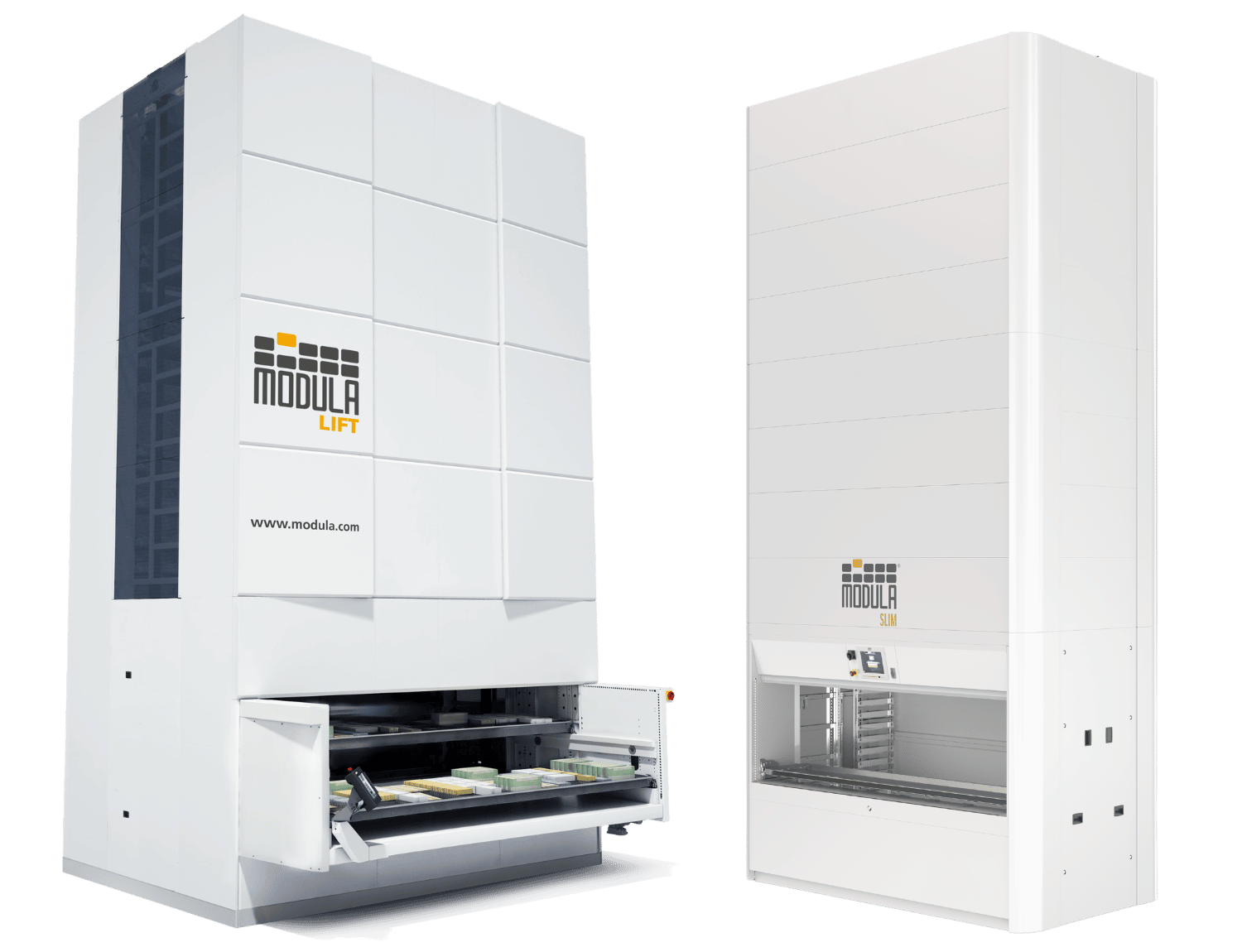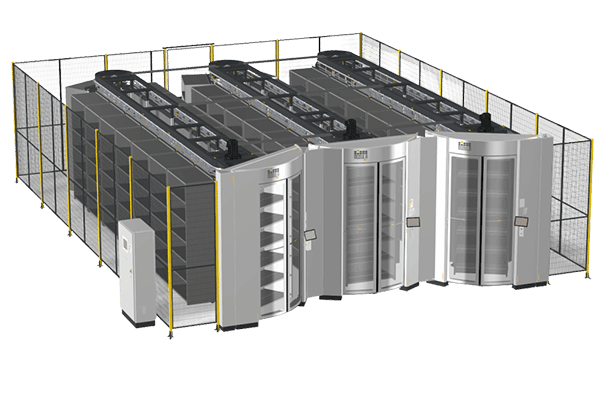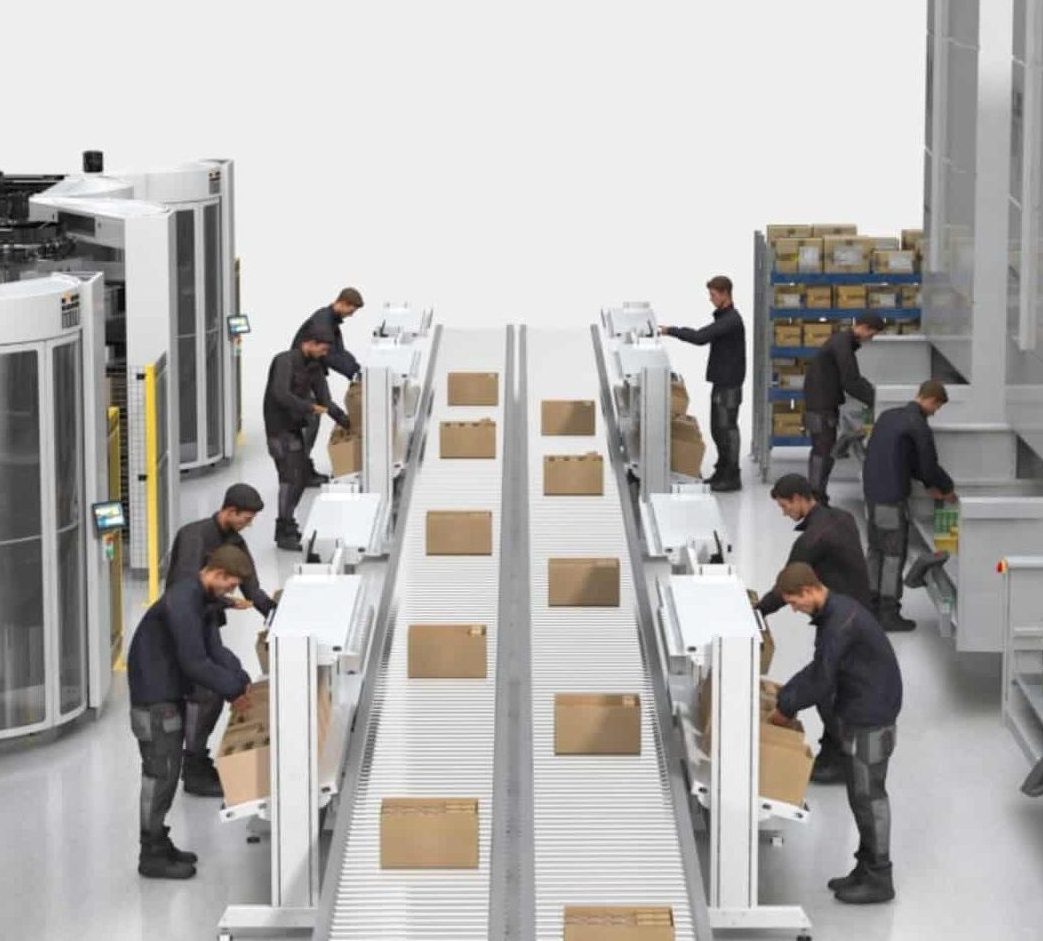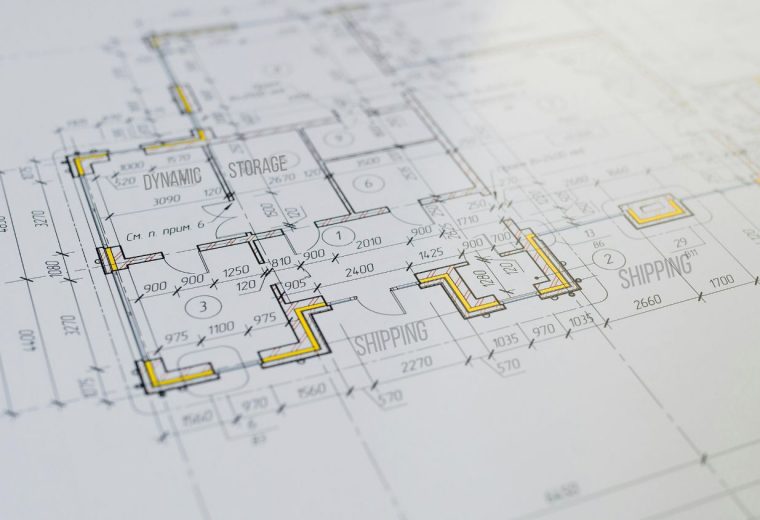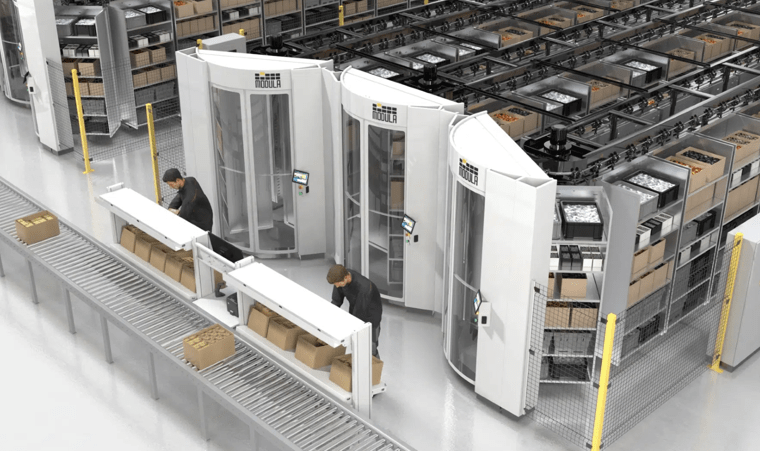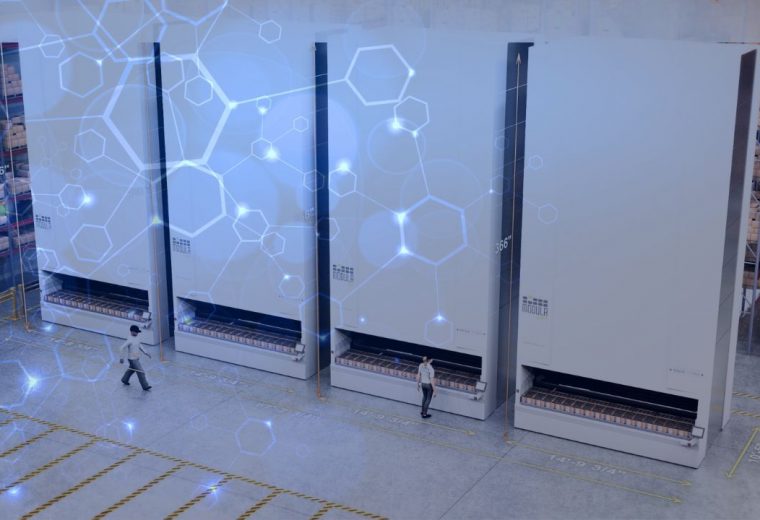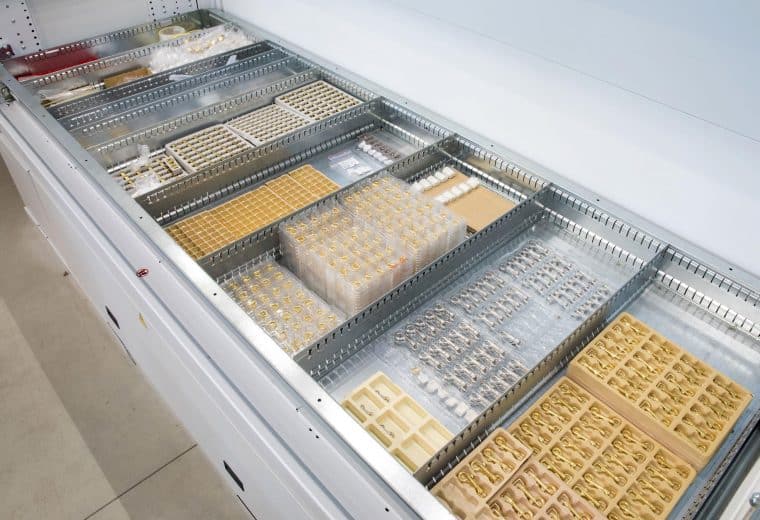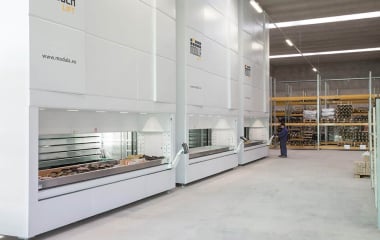Top Smart Warehousing Technologies, Best Practices & Key Benefits
Whether it’s reducing costly product returns by increasing picking accuracy or protecting your warehouse operators from injury, smart warehousing is the solution to a wide range of challenges posed by traditional warehouse systems.
We’ll share all you need to know about smart warehousing, and introduce you to automated warehouse solutions at Modula to help you make the switch to a smart warehouse system.
What Is a Smart Warehouse?
A smart warehouse is a storage facility that leverages automated warehouse solutions, such as automated storage and retrieval systems, robots and inventory management systems, among other technologies.
In addition, a smart warehouse provides real-time data and predictive analysis to help you make more informed decisions to meet changing consumer demands.
A smart warehouse isn’t defined by a single factor or innovation.
It’s a warehouse where a wide range of technologies optimizes every step of the order fulfillment process, from receiving inventory to delivering orders to your customer’s door.
Smart warehouse solutions:
- Improve your warehouse operation’s efficiency and productivity
- Safely store your inventory
- Protect your employees from physical strain and exertion
- Provide you with full visibility into your inventory
Smart Warehouse vs. Traditional Warehouse
While a smart warehouse utilizes automated warehouse solutions, a traditional warehouse relies on conventional storage systems and manual labor to store inventory and perform warehouse operations.
Compared to a traditional warehouse, a smart warehouse can significantly increase efficiency and productivity, while minimizing errors in tasks such as picking, managing inventory and packing.
Smart Warehousing Technologies
Smart warehousing technologies allow you to replace manual tasks with automated systems for improved productivity. Types of smart warehousing technologies include:
1. Automated Storage and Retrieval Systems
Automated storage and retrieval systems (ASRS) are computer-controlled systems that automatically place and retrieve items from defined storage locations in a warehouse.
ASRS are integrated with a warehouse management system (WMS) to determine which item should be retrieved. This smart warehouse technology includes automated systems such as vertical lift modules, horizontal carousels, tote shuttles, mini-loaders and unit-loaders.
2. Warehouse Management Systems
Warehouse management systems are software solutions that provide visibility into your warehouse inventory and stock movement.
In addition, warehouse management systems can integrate with order picking solutions to guide warehouse operators to pick the correct items and quantity.
3. Mobile Robots (AMRs and AGVs)
Automatic guided vehicles (AGVs) are robots that transport goods within the warehouse. They are equipped with reflective markers and wires and require guidance from warehouse employees to function.
On the other hand, autonomous mobile robots (AMRs) are the successors of AGVs. They are advanced robots that utilize sensors and artificial intelligence without the need for human intervention.
While both AGVs and AMRs are used to transport goods within the warehouse, AMRs are more sophisticated robots that can independently travel the facility.
4. Collaborative Robots (Cobots)
Collaborative robots, or cobots, are robotic systems equipped with sensors and safety features that allow them to collaborate with human workers to boost efficiency and productivity.
Cobots are utilized to perform warehouse tasks such as palletizing (storing products in a pallet), order picking and packing.
5. Automated Picking Solutions
Automated picking solutions are innovations that increase picking accuracy by guiding warehouse operators to the correct picking location.
These solutions include pick to light, put to light and pick by voice systems, among other technologies.
6. Internet of Things
Internet of Things (IoT) devices include smart sensors, robots and scanners that perform a wide variety of tasks in a warehouse, from monitoring temperature and humidity to tracking inventory and assessing the condition of warehouse equipment.
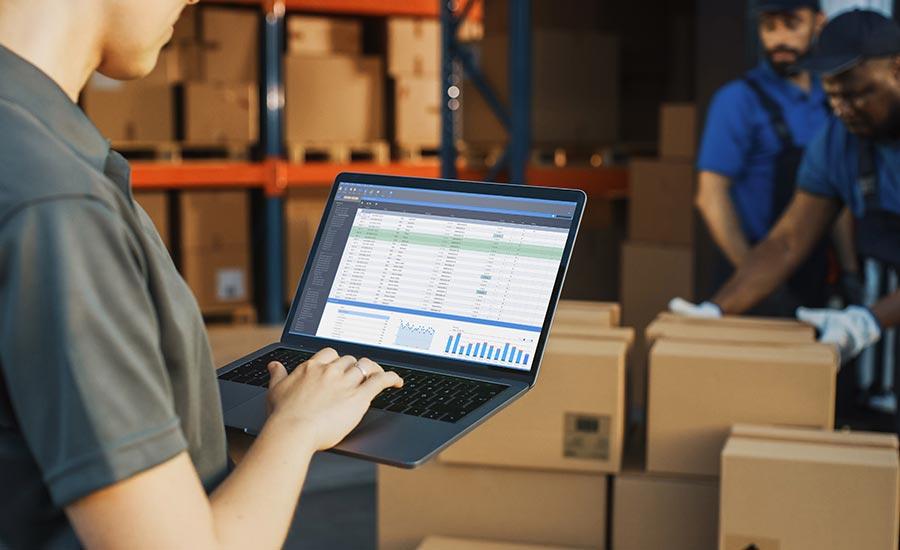
Benefits of Smart Warehousing
Smart warehousing can help you safely store your inventory, provide insight into your warehouse’s performance and help you forecast consumer demands.
Key benefits of smart warehousing include:
- Increase picking accuracy and speed: Instead of relying on traditional picking methods such as manually checking pick tickets, pick to light or voice picking systems can guide warehouse employees to the correct picking location faster, allowing them to accurately pick multiple orders simultaneously.
- Increase order fulfillment: Automated warehouse systems can operate around-the-clock, enhancing throughput and reducing the time it takes to fulfill orders.
- Optimize warehouse space: Smart warehousing technologies, such as vertical lift modules and horizontal carousels, can help you save space by utilizing your available ceiling height or warehouse width.
- Reduce manual errors: By automating processes, smart warehousing technologies can reduce or even eliminate errors caused by manual labor, such as mispicks or incorrect shipments. This leads to improved customer satisfaction and lower costs associated with product returns.
- Access data in real time: Smart warehouses utilize warehouse management systems and IoT devices, providing visibility into crucial warehouse information such as stock levels and equipment health. This allows for better inventory control and decision-making for demand forecasts.
- Enhance worker safety: By automating hazardous processes such as lifting heavy items or reaching high and low areas, smart warehouses can reduce unsafe work practices, providing a safer work environment for employees.
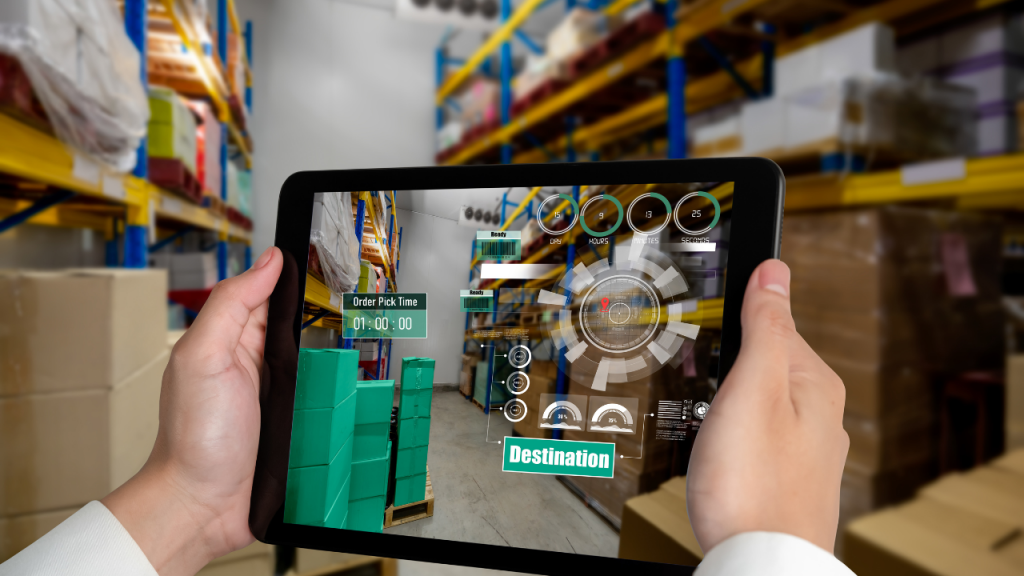
Smart Warehousing Best Practices
Investing in automated solutions is the first step; implementing these technologies into your daily operations is the second.
To get the most out of your investment and build a smart warehouse, follow these five key best practices:
1. Optimize Your Floor Plan
You don’t need the largest warehouse — you just need the smartest layout. Organizing your warehouse can help you take advantage of your space.
To optimize your floor plan, invest in vertical lift modules and horizontal carousels and save up to 90% of valuable space compared to traditional storage methods.
2. Implement Demand Forecasting
Demand forecasting gives you the insights you need to determine when it’s time to implement a flash sale or when you should stock up on a certain item (like turkeys during Thanksgiving!)
To implement demand forecasting:
- Gather historical sales data at a granular level (by SKU or consumer behavior, for example)
- Choose a forecasting method, such as exponential smoothing (a method where the weighted average of past observations is calculated) or regression analysis (a statistical technique used to understand the relationship between a dependent variable and one or more independent variables)
- Update and modify your forecasting model regularly to ensure that predictions are accurate
3. Prioritize Energy Efficiency
Implementing energy-efficient practices can help you cut electricity costs and reduce the environmental impact of running a warehouse.
To implement energy-saving practices in your warehouse:
- Upgrade to energy-efficient lighting solutions, such as LED lights, which can last three to five times longer than traditional light bulbs
- Implement motion sensor lights and consider installing skylights and large windows to allow natural light to get in
- Install energy-efficient heating, ventilation and air conditioning (HVAC) systems; make sure they are serviced at least once a year to ensure optimal efficiency
4. Partner With a 3PL Provider
A third-party logistics provider provides outsourced logistics and supply chain management services to businesses.
3PL providers specialize in logistics and supply chain management. They have the expertise and experience to recommend the best smart warehousing solutions tailored to your specific needs.
If you don’t have the resources to implement automated warehouse solutions from the get-go, they can provide you with warehouse management systems (WMS), automated picking solutions, and other smart warehousing technologies.
5. Train Your Employees
Properly training your employees is key to ensuring their safety when handling new warehouse technologies.
To train your warehouse employees, share video tutorials and perform live demonstrations on how to use warehouse equipment or solutions.
Modula’s Smart Warehouse Solutions
As one of the pioneers in advanced automated storage solutions and warehouse management systems, Modula reimagines warehouses across industries to boost productivity, efficiency and picking accuracy across operations.
Our automated solutions include:
1. Modula Vertical Lift Modules
Modula Vertical Lift Modules (VLMs) are designed to maximize your warehouse space by making use of your available ceiling height, enhancing warehouse efficiency and capacity.
We offer two models:
- Modula Lift: Ideal storage solution for industrial and spare parts, as it is available in a wide range of capacities and sizes
- Modula Slim: Ideal storage solution for warehouses with limited floor space, thanks to its compact size
Our VLMs allow you to:
- Save 90% of your floor space by utilizing a minimal footprint and maximizing available ceiling height
- Process more orders in less time with a throughput of up to 140 trays per hour
- Boost picking speeds to 300 lines per hour or more
- Boost employee safety by eliminating the need to reach for products
- Protect your inventory, thanks to an enclosed system with restricted access and a reliable locking feature
2. Modula Horizontal Carousels for Inventory Storage
The Modula Horizontal Carousel (HC) is the go-to storage solution for warehouses with low-ceiling environments.
Our HC allows you to:
- Configure shelf spacing to store a wide range of inventory
- Experience high-speed picking rates of up to 550 lines per hour for each warehouse operator
- Achieve full traceability of stock levels and orders
- Keep track of picking operations in real time
- Achieve 99% picking accuracy with our Put to Light Systems and barcode readers
3. Modula Picking Solutions
Modula picking solutions allow you to reduce search time for locating inventory and increase accuracy when processing individual orders or large batches of orders.
Our picking solutions allow you to:
- Increase picking accuracy and speed, thanks to light devices that guide your warehouse operators to the correct picking area
- Boost inventory management by offering an in-depth view of your existing and forecasted inventory
4. Modula Warehouse Management System
Modula’s Warehouse Management System allows you to track the location and movement of inventory within your warehouse, while gaining complete visibility into your stock levels.
Choose from two Warehouse Management Solutions:
- Module WMS Base: Comes with every Modula automated solution
- Modula WMS Premium: End-to-end inventory and advanced warehouse management solutions
Our Warehouse Management Systems allow you to:
- Gain completed inventory visibility
- Track stock levels and inventory movement
- Boost accuracy when integrated with Modula ASRS
5. Modula Cloud
Modula Cloud allows you to easily gather data from your Modula ASRS, no matter where it is in your warehouse.
Built-in and always on, it provides an intuitive online portal for you to monitor and manage your operations securely from any device and any location.
Modula Cloud allows you to:
- Monitor your Modula automated warehouse solutions remotely
- Manage your warehouse from any location with remote diagnostics, support and resolutions, while implementing predictive maintenance
- Keep an eye on the status of your warehouse, including energy consumption, equipment health and unit statistics
- Get notifications about the status of each machine
- Collect reports on completed cycles, tray usage efficiency, energy consumption and fulfilled orders
With Modula’s automated warehouse solutions, you can achieve a smart warehouse that enhances operational efficiency, boosts picking accuracy, improves inventory management and maximizes space utilization.

